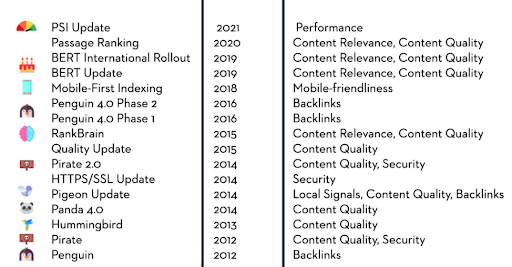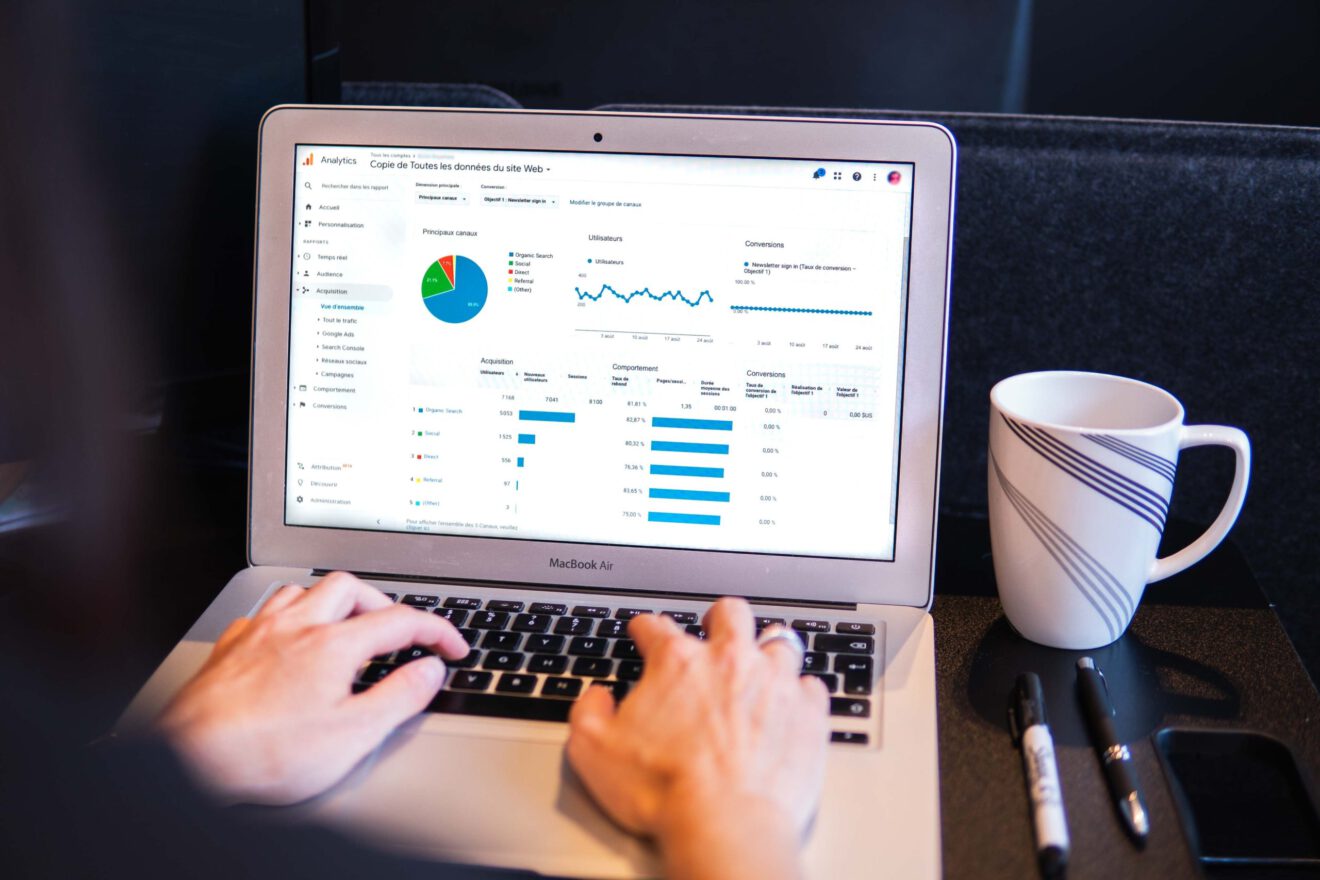If you’ve noticed changes to your keyword rankings over the last several weeks, it may be because Google rolled out another Core Update. Google regularly updates its ranking algorithm throughout the year in order to provide users with a better search experience and more relevant search results.
But for those site owners that see their SEO performance suffer as a result of algorithm updates, it can be a frustrating experience. Core Updates can be particularly painful if your site had web pages ranking on page one for valuable keywords that then dropped to page two, or worse, stopped being promoted entirely.
So, when it comes to algorithm updates, how exactly should site owners respond?
Some updates may have a temporary impact while others require you to reevaluate how you are implementing your SEO strategy.
For any site owner or digital marketer who has experienced the highs and lows of algorithm updates, here’s how to know whether to ride out the volatility or to start doing the work of regaining your site’s lost visibility.
How often does Google update its algorithm?
Experts estimate that Google updates its algorithm somewhere between 500-600 times per year. Most of those changes are small and do not drastically impact rankings, while major updates, like BERT or Passage Ranking, can impact a significant percentage of all keyword searches.
In general, site owners should pay attention to the larger algorithm updates and the core rankings factors that they are refining. In the below image, you’ll see some of the most impactful algorithm updates over the past decade.

Many of these updates were so large, they fundamentally changed how SEO was done. Last year’s Page Experience update made page speed, Core Web Vitals, and mobile usability official ranking factors, meaning SEO is no longer just about what is on your web pages, but how those web pages perform for users across devices.
4 things to do after an algorithm update
So what should site owners do after an algorithm update is complete? Well, the best way to go about this is to pay attention and anticipate when updates will occur. Then, take note of rankings for the weeks before and after the update is complete.
#1: Check whether your rankings were impacted
There are several tools you can use to measure the impact of algorithm updates on your SEO performance. If you do not yet have a Google Search Console account, make sure you set up your free account so you can start monitoring your SEO performance.
Other tools like SearchAtlas, Ahrefs, and Conductor allow you to track keyword rankings. The below rank change charts come from my company’s GSC Insights, which uses Google’s keyword data.
It’s important to note that updates are usually rolled out over the course of a few weeks. During those rollouts, sites may see temporary drops in keyword rankings, but not permanent drops in site visibility in the long term.
In this example (below), this website experienced a temporary rankings drop for the duration of the December 2020 Core Update rollout. But by the completion of the update, the site regained their ranking positions and did not appear to be permanently impacted.

In contrast, this next website (below) experienced a more long-term rankings drop as a result of the November 2021 Core Update. The rollout began Nov. 17and was completed Nov. 30. The rankings drops during the start of the rollout have remained even after the update is now complete.

After you use your preferred tools to confirm whether any drops in keyword rankings are here to stay, it’s time to get to work.
#2: Research what is being said about the update
Although Google does not share extensive details about their updates, it usually communicates what core ranking factors they are focused on and will offer some general guidance for webmasters in their Search Central blog.
In addition to going to Google, there is always a lot of chatter online during and after algorithm rollouts. If you are new to paying attention to updates and their impacts, make sure you are following members of the SEO community who share their insights and analysis on how updates are impacting their own network of sites or publishers.
This research process is important because it can help you understand whether or not SEOs and digital marketers are seeing the same patterns in their own data as a result of the update. If so, that’s a strong sign that similar patterns in your own site’s data are likely the result of the update, and it’s time to act accordingly.
#3: Determine which ranking factors were impacted
One of the challenges of SEO is isolating which factors are the source of any success or setbacks. Data-driven SEO requires you to look closely at all of the data available to you and leverage that information as best you can in order to make smarter decisions.
Google has more than 200 ranking factors it relies on when promoting web pages, which means a lot of possible culprits of declining keyword rankings. But thankfully, Google’s ranking factors can all be simplified into a few core areas: Content, authority, technicals, page experience, and industry-specific factors (e.g. local business, healthcare, credit lending, etc.).
Most algorithm updates are focused on helping Google’s crawlers better evaluate and identify the quality of web pages in these five key categories. For example, Google expressed that a recent Core Update was focused primarily on improving the quality and relevance of search results for users, which falls under the larger umbrella of content.
So if your site experienced rankings drops in November, then your on-page content is where your team should direct your focus.
#4. Improve the quality signals across all of your web pages
Although some of your web pages might take a bigger hit than others after an update, it’s far more likely you’ll see general downward trends across all of your pages.
Depending on the ranking factors the algorithm was focused on, your recovery may require either a page-by-page or site-wide approach.
For algorithm updates focused on authority, general link-building efforts can help you recover some of that lost ground. But for content-focused updates, you will more likely need to refine the on-page elements on each page of your website. Make sure you prioritize the pages that have high search volume, high conversion potential, or rank for important keywords in your industry.
Then, focus on improving those signals that communicate quality to Google crawlers in those key areas. For content-focused updates, look to see whether your web pages have:
- Long-form, comprehensive website copy
- Rich media, images, and videos
- Relevant Internal and external links with contextual anchor text
- Optimized meta tags like page titles, headings, meta descriptions or schema.org markup
- Employ other on-page SEO best practices
Final thoughts on algorithm updates
Recovering from an algorithm update is no easy task, but on the bright side, these updates have a way of showing site owners where our websites still have weaknesses and room for improvement.
Just like Google is on a constant quest to improve the quality of the search experience, site owners need to strive to always improve the quality of their own web pages for users.
When site owners similarly prioritize quality, they will never be that far behind updates, and any needed recovery will become easier and quicker, even as algorithms continue to evolve.
Manick Bhan is the founder and CTO of LinkGraph, an award-winning SEO and digital marketing agency. He is also a skilled programmer and the creator of the SearchAtlas SEO software suite. You can follow him at @madmanick.
Editor’s note: Unless indicated, images courtesy of LinkGraph.io.
If you like this article, sign up for the SmartBrief on Social Business email newsletter for free.
